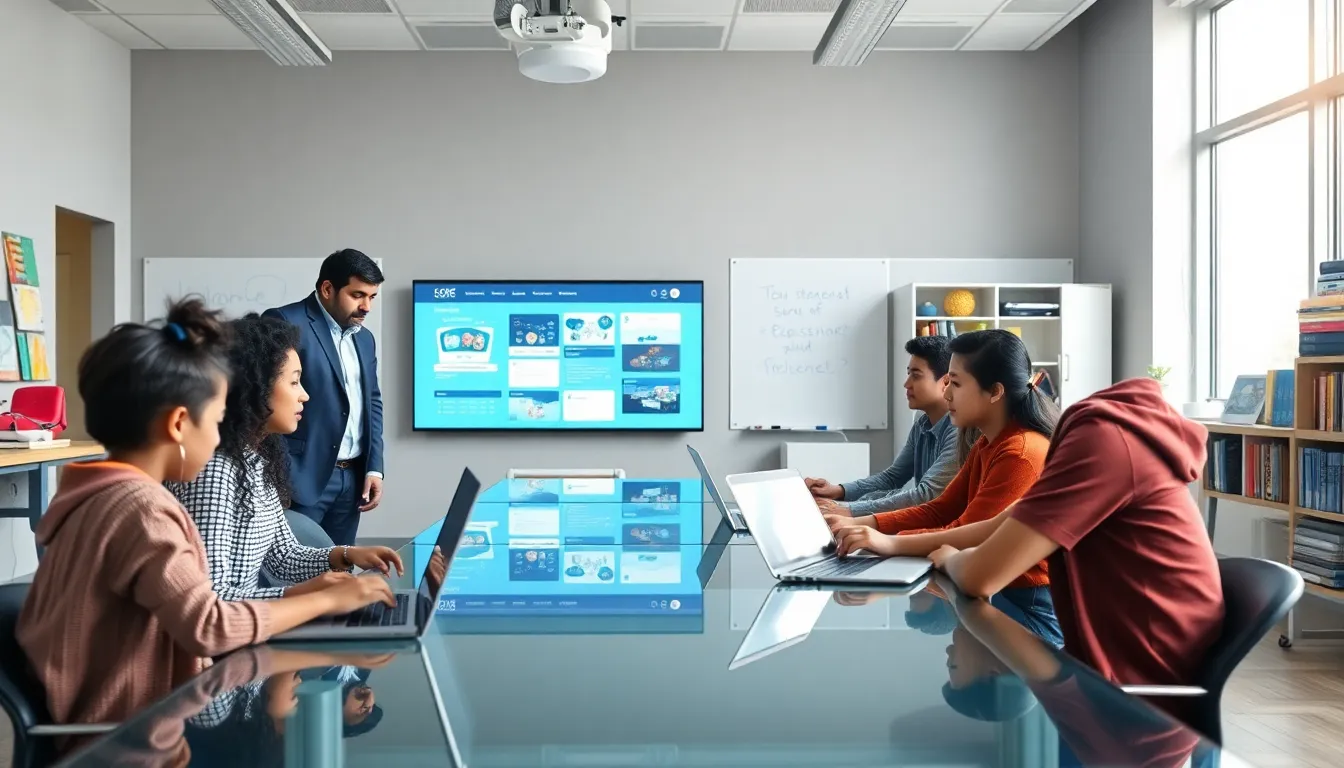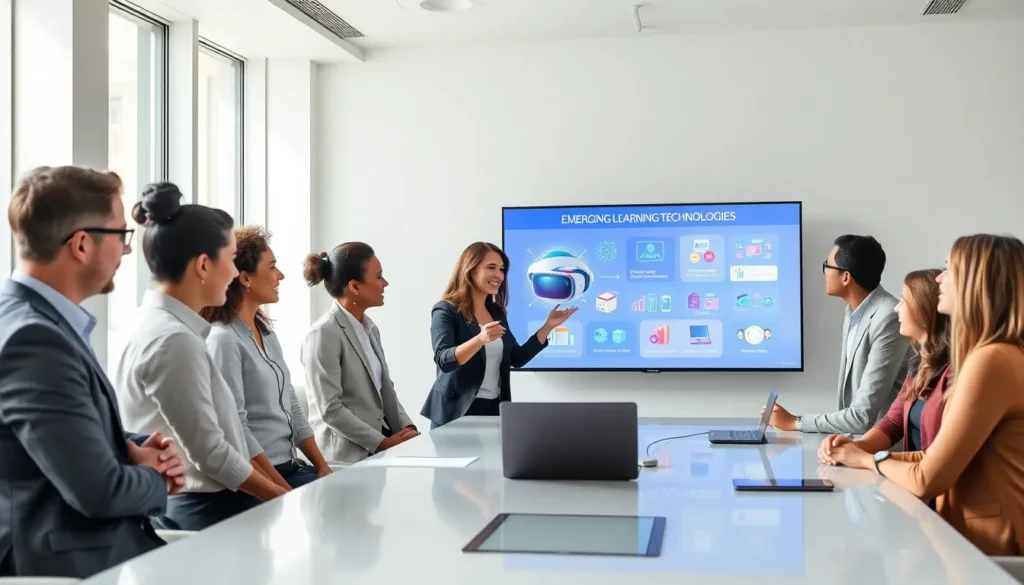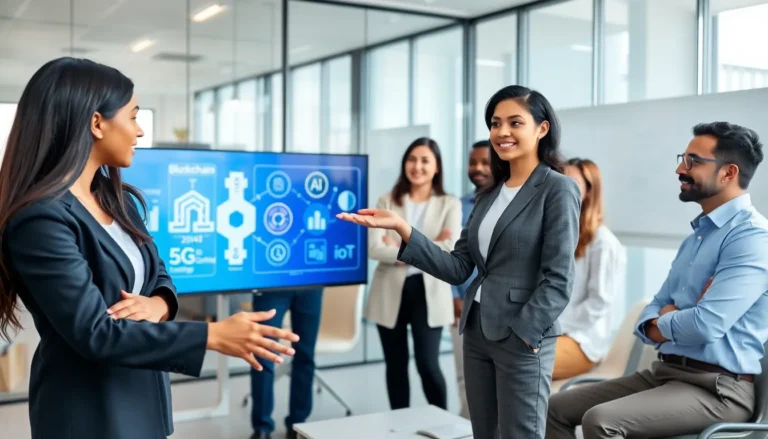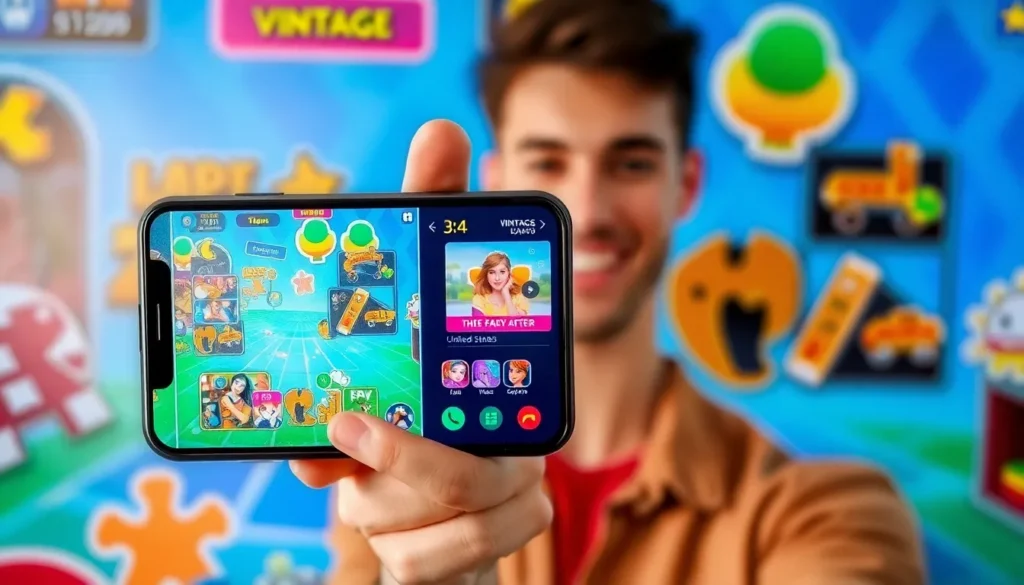In the fast-paced world we live in today, learning is no longer limited to textbooks and classrooms. Instead, it’s evolving at a dizzying rate, thanks to emerging learning technologies that would have made even R2-D2 raise an eyebrow. From artificial intelligence to virtual reality, these innovations are reshaping how we absorb knowledge. But what does this mean for students, educators, and the future of education as a whole? Hang tight as we dive deep into the exhilarating world of learning technologies, no need for a time machine, just your eager mind.
Table of Contents
ToggleThe Evolution of Learning Technologies

The history of learning technologies can be traced back to simple tools like chalkboards and projectors. Over the years, we have witnessed significant advancements that have fundamentally altered the educational landscape. The arrival of computers in classrooms was one giant leap. With each decade, new technologies have emerged, morphing teaching methodologies and learning experiences.
In the 1990s, the internet began to play an integral role in education, facilitating access to a wealth of information. Fast forward to the 21st century, and we’re now entering an era where personalized and adaptive learning experiences are not just possible, they’re expected. Efforts to integrate technology into learning have evolved improve student engagement and streamline educational processes.
Every new wave of technology introduces opportunities for innovative practices in pedagogy. Today’s focus is not solely on the content delivered but on how it is delivered. Interesting development patterns reveal how these technologies are intricately tied to societal changes and global challenges.
Artificial Intelligence in Education
Artificial Intelligence (AI) is becoming the engine behind many modern learning technologies. It provides innovative solutions that can adapt to the needs of individual learners. By analyzing data, AI can identify patterns in students’ learning behaviors, helping educators tailor their teaching methods. Think of it as a personalized tutor available 24/7, ready to help when needed.
AI-driven programs can assist in grading, identifying learning gaps, and even suggesting resources tailored specifically for each student. Natural language processing tools can help students improve their writing skills by offering real-time feedback. Chatbots can answer students’ questions instantly, making learning more accessible.
These advances highlight that while the role of the teacher remains pivotal, AI can be a robust support system that empowers both educators and students.
Virtual and Augmented Reality in Learning
Virtual and Augmented Reality (VR and AR) are transforming the learning experience by providing immersive environments that textbooks simply can’t match. Imagine students diving into a 3D model of the human heart or exploring ancient civilizations without ever setting foot outside their classrooms.
VR allows learners to experience complex concepts firsthand, making understanding easier and more engaging. On the other hand, AR enhances reality by overlaying educational content onto the real world. Students can interact with 3D simulations, encouraging exploration and discovery.
Both VR and AR have tremendous potential, revolutionizing fields like science, history, and even art. The immersive nature of these technologies makes learning memorable, students are not just passive recipients of information: they become active participants in their education.
The Role of Mobile Learning Technologies
Mobile learning technologies are another critical component of contemporary education. With the widespread use of smartphones and tablets, education can happen anytime and anywhere. This shift towards mobility means that learning is no longer confined to a classroom setting.
Educational apps and platforms provide flexibility, enabling learners to study at their own pace. Whether through online courses, flashcards, or interactive quizzes, students are empowered to take control of their learning journeys. Mobile learning also promotes collaboration among peers, as students can easily share resources and ideas through various platforms.
Importantly, mobile learning technologies cater to diverse learning styles, making education more inclusive. Visual learners benefit from videos, while auditory learners can listen to podcasts or audiobooks. The key to success lies in accessibility and adaptability.
Gamification and Interactive Learning Platforms
Gamification is yet another fascinating trend in emerging learning technologies. By incorporating game-like elements into educational activities, learning becomes a fun and engaging process. From badges and leaderboards to challenges, gamification taps into learners’ intrinsic motivations, encouraging them to strive for achievement.
Interactive learning platforms have sprung up, where learners can participate in quizzes, simulations, and even team competitions. By making education more dynamic and enjoyable, these tools can drastically improve retention rates and build a deeper understanding of the material.
Schools and educational institutions are increasingly embracing these methods, seeing not just academic improvements, but also increased student satisfaction and motivation. It’s not just about playing games: it’s about creating an environment where learning feels like an adventure.
The Future of Learning Technologies
Looking forward, the future of learning technologies holds even more promise. As innovations continue to unfold, emerging technologies such as blockchain could redefine credentials, ensuring secure and verifiable educational achievements.
Plus, machine learning will enable even more personalized learning experiences, adapting to students’ needs in real time. Besides, the growth of immersive and remote experiences will empower lifelong learning, allowing individuals to expand their knowledge no matter where they are in the world.
As educators and policymakers embrace these changes, they will need to focus on how to integrate technology effectively and sustainably. The potential disruptions could lead to alterations in curriculum design, assessment strategies, and the overall educational framework.









